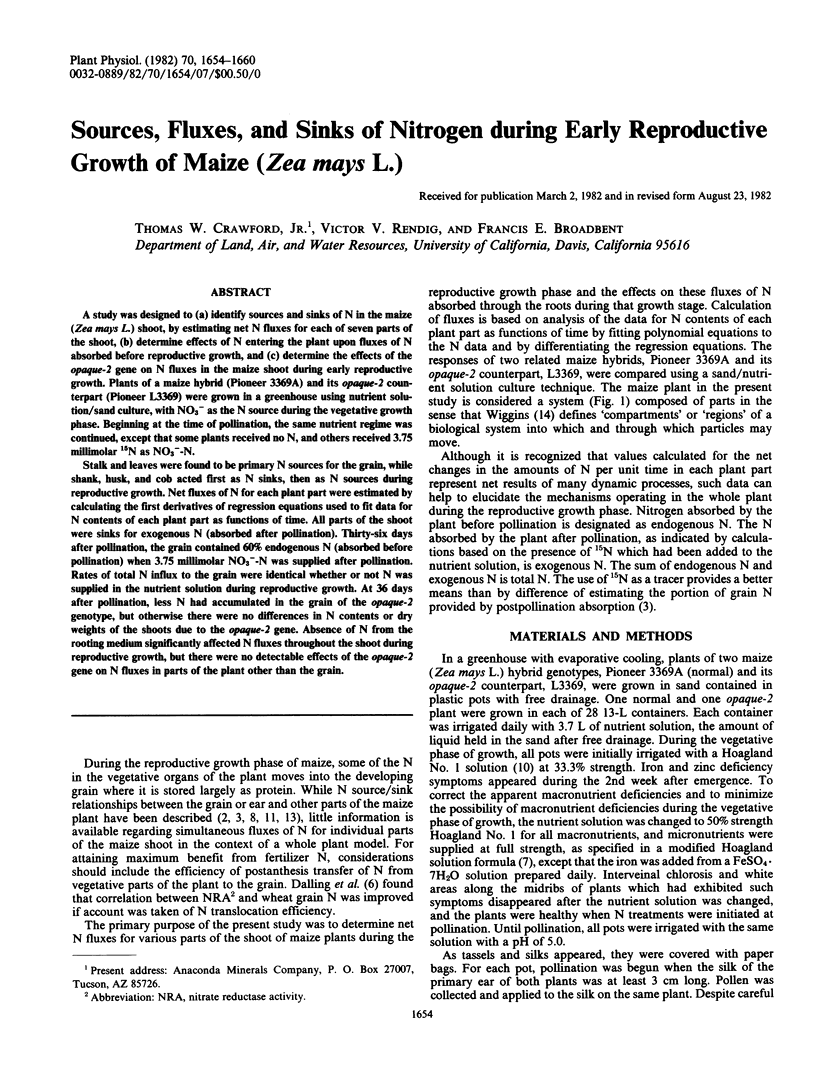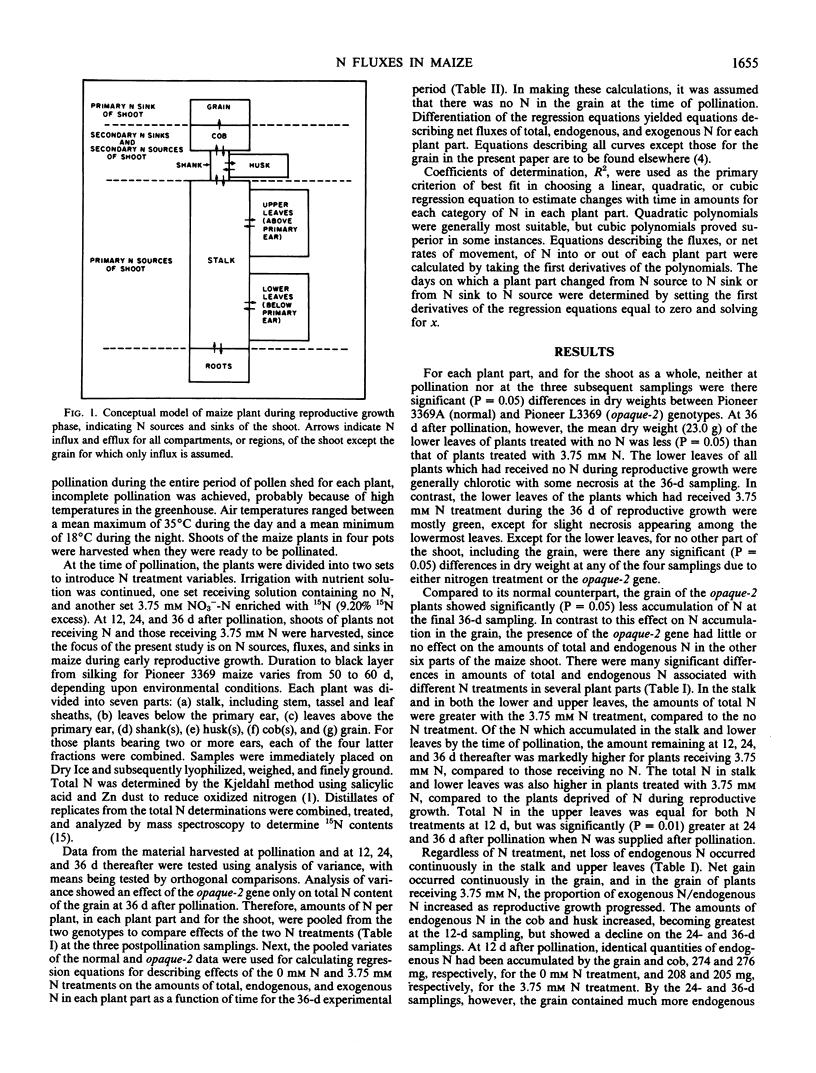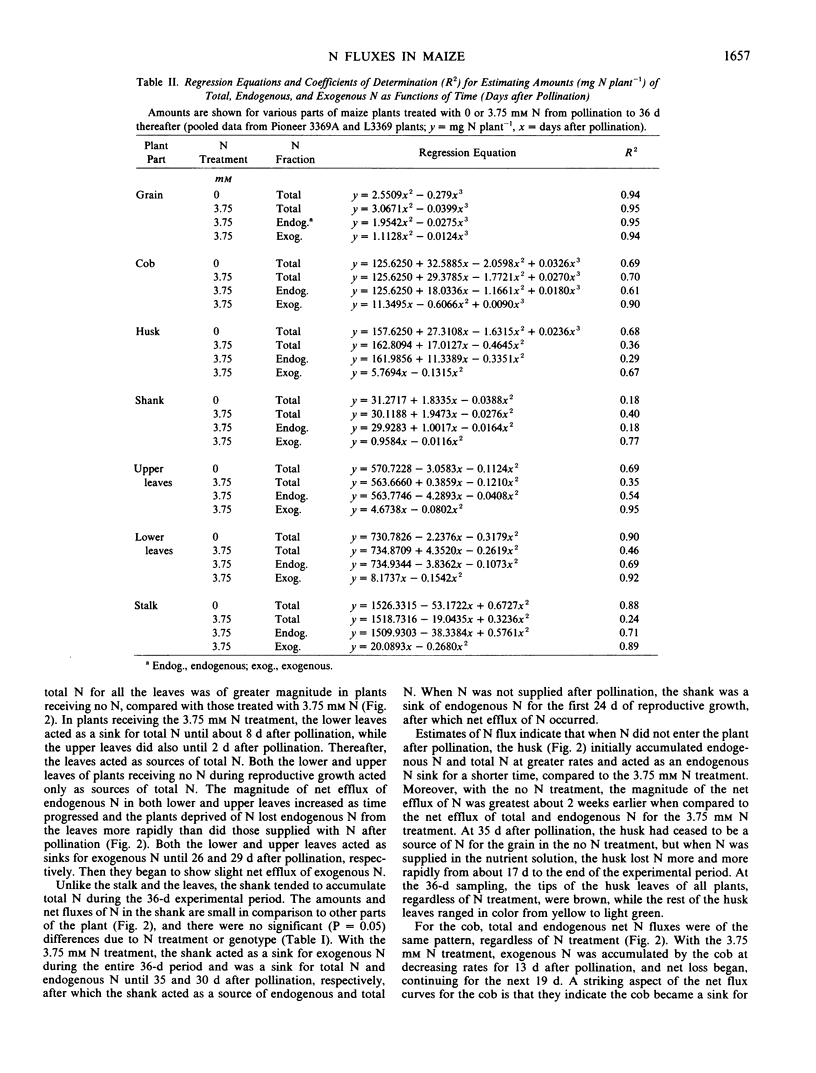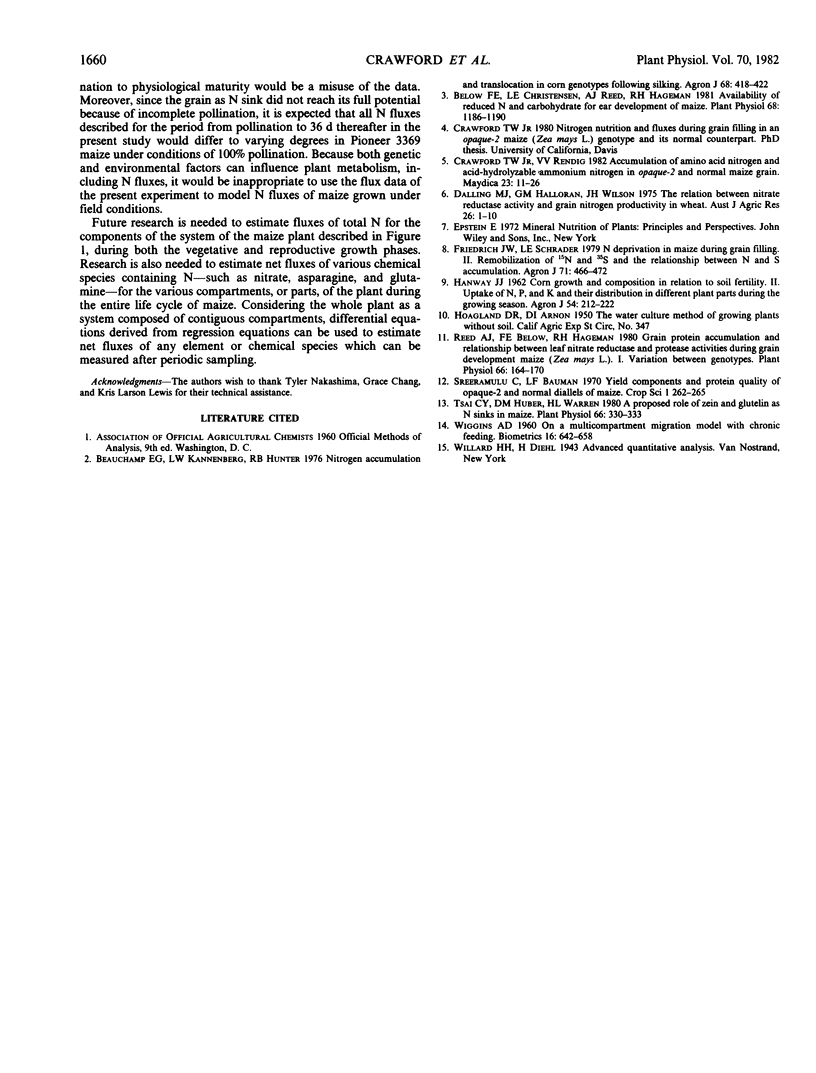Abstract
A study was designed to (a) identify sources and sinks of N in the maize (Zea mays L.) shoot, by estimating net N fluxes for each of seven parts of the shoot, (b) determine effects of N entering the plant upon fluxes of N absorbed before reproductive growth, and (c) determine the effects of the opaque-2 gene on N fluxes in the maize shoot during early reproductive growth. Plants of a maize hybrid (Pioneer 3369A) and its opaque-2 counterpart (Pioneer L3369) were grown in a greenhouse using nutrient solution/sand culture, with NO3− as the N source during the vegetative growth phase. Beginning at the time of pollination, the same nutrient regime was continued, except that some plants received no N, and others received 3.75 millimolar 15N as NO3−-N.
Stalk and leaves were found to be primary N sources for the grain, while shank, husk, and cob acted first as N sinks, then as N sources during reproductive growth. Net fluxes of N for each plant part were estimated by calculating the first derivatives of regression equations used to fit data for N contents of each plant part as functions of time. All parts of the shoot were sinks for exogenous N (absorbed after pollination). Thirty-six days after pollination, the grain contained 60% endogenous N (absorbed before pollination) when 3.75 millimolar NO3−-N was supplied after pollination. Rates of total N influx to the grain were identical whether or not N was supplied in the nutrient solution during reproductive growth. At 36 days after pollination, less N had accumulated in the grain of the opaque-2 genotype, but otherwise there were no differences in N contents or dry weights of the shoots due to the opaque-2 gene. Absence of N from the rooting medium significantly affected N fluxes throughout the shoot during reproductive growth, but there were no detectable effects of the opaque-2 gene on N fluxes in parts of the plant other than the grain.
Full text
PDF






Selected References
These references are in PubMed. This may not be the complete list of references from this article.
- Below F. E., Christensen L. E., Reed A. J., Hageman R. H. Availability of reduced N and carbohydrates for ear development of maize. Plant Physiol. 1981 Nov;68(5):1186–1190. doi: 10.1104/pp.68.5.1186. [DOI] [PMC free article] [PubMed] [Google Scholar]
- Reed A. J., Below F. E., Hageman R. H. Grain Protein Accumulation and the Relationship between Leaf Nitrate Reductase and Protease Activities during Grain Development in Maize (Zea mays L.): I. VARIATION BETWEEN GENOTYPES. Plant Physiol. 1980 Jul;66(1):164–170. doi: 10.1104/pp.66.1.164. [DOI] [PMC free article] [PubMed] [Google Scholar]
- Tsai C. Y., Huber D. M., Warren H. L. A proposed role of zein and glutelin as N sinks in maize. Plant Physiol. 1980 Aug;66(2):330–333. doi: 10.1104/pp.66.2.330. [DOI] [PMC free article] [PubMed] [Google Scholar]


